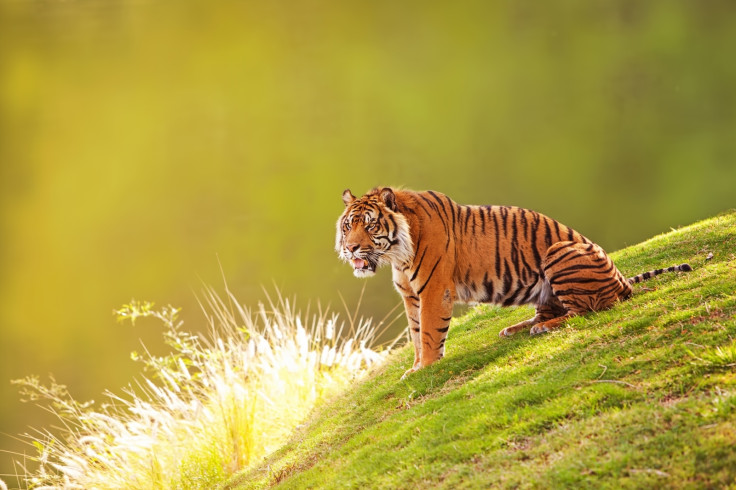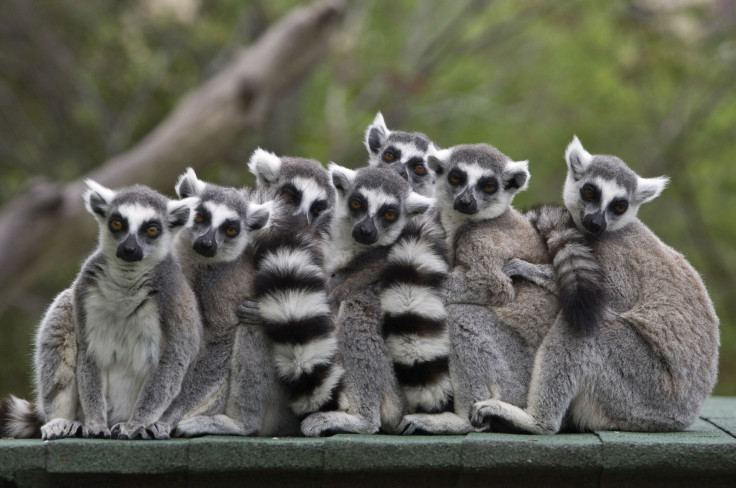Endangered species are most at risk in East Asia and the Pacific - here's why
KEY POINTS
- There are about 918 endangered species in the wider East Asia and Pacific region alone
- 188 of these species are located in Indonesia
- Madagascar is the second worst offender
There are more than 3,300 endangered mammal species in the world, with a huge part of that number concentrated in just one region.
Domestic green tech website the Eco Expert lead research to identify how many species were endangered in each country. They looked at 217 countries around the globe to understand where species were most at risk of extinction.
In 2014, the extinction rate was 1,000 times faster than what it would be if humans were not around. According to the WWF, between 0.01 and 0.1% of all species become extinct each year.
Because we haven't actually discovered all the species that are on Earth to begin with, pinpointing exactly how many of them go extinct every year is hard. At best, we can get an estimate from the species we do know of. According to WWF, between 1.4 and 1.8 million species have already been identified.
It would mean between 200 and 2,000 species go extinct every year.
Breaking down the numbers by country gives a good picture of where some species are the most at risk and why.
There are about 918 endangered species in the wider East Asia and Pacific region alone. 188 of these are located in Indonesia
Not only does Indonesia harbour the highest concentration of endangered species, but it's home to the most critically endangered ones too, according to the International Union for Conservation of Nature and Natural Resources' Red List - IUCNR. The list assesses the conservation status of species on a global scale and is updated at least once a year.
On 3 November 2017, scientists discovered a new species of Great Ape, the Tapanuli orangutan, which hides in the forests of the island of Sumatra. The discovery took the number of Great Apes species up to 7, but there are only 800 Tapanuli orangutans left. This species was declared critically endangered at the same time as it was introduced to the world.
Other endangered species native to Indonesia are the Sumatran Elephant – 3000 remaining specimens – and the Sumatran Rhino – remaining population unknown.
And there's one obvious reason these numbers keep dropping in the region. We see it everyday, contained in almost half of what we buy, from pizza to lipstick to cookies: palm oil.
Some 85% of the world's palm oil production takes place in Indonesia and Malaysia. Because the business is so profitable, it leads to unchecked deforestation. Palm oil and pulp production has cost Sumatra 85% of its forests in the last 60 years. Between 2000 and 2012, 6 hectares of primary forest were lost. In 2012, Indonesia lost more forest than the Brazilian Amazon did.
"If urgent action is not taken it could be the end of these incredibly rich and diverse forests," WWF's Agriculture Commodities Manager Emma Keller tells IBTimesUK.
The more forest is lost in Indonesia, the more at risk its native species are. The unregulated palm oil trade puts a lot of pressure on the animals "particularly the larger mammals that need large territories to survive and thrive", Keller adds.
Although boycotting products that contain palm oil would seem a logical solution, Keller thinks that shifting from palm to other oils – like soy or coconut – would just lead to more unchecked oil production: chop one head off, three grow back.
"Palm oil production doesn't have to be synonymous with deforestation," she says, "as a consumer, we encourage people to buy less and buy better."
Sher mentions several initiatives aimed at encouraging the production of "sustainable palm oil", like the Round-table on Sustainable Palm Oil (RSPO). The round-table "brings all actors in the palm oil supply chain together, including producers, traders, manufacturers, retailers as well as representatives from civil society." Collectively, they have all vowed to define and apply standards for sustainability to the industry.
For consumers, there are tools to see which companies are doing their part: "The WWF Palm oil Scorecard shows which companies are taking responsibility and using sustainable palm oil and each of us can play a role in spending our money with those who are doing well and asking others to do more," says Keller.
In addition to deforestation which considerably reduces their natural habitat, animals in Indonesia are victim of constant poaching practices. It particularly affects species like the Sumatran Tiger, who now counts only 400 specimens.

Madagascar, or the Lemur's nightmare.
The African island of Madagascar, home to 120 endangered species, is the second worst offender on the list.
The lemur and its subspecies, all native to the island, are particularly at risk.
Director of Conservation at Bristol Zoological Society, and Deputy Chair of the IUCN SSC Primate Specialist Group, Christoph Schwitzer tells IBTimesUK that poverty has huge effects on Madagascar's lemur population.
The lemurs' natural habitat is gradually shrinking because of human activity.
"Many people in Madagascar, particularly in the rural areas, are extremely poor. They grow rice to feed themselves and their families, but many of them don't own any land," Schwitzer says.
As a result, many will chose to cut down "pieces of forest" in order to provide for themselves. They cut down trees and burn the rest to plant their rice. It's called "slash-and-burn agriculture".
The soils obtained from "slash-and-burn" don't last more than 2 to 3 years, and people eventually have to reproduce the pattern 100m further, Schwitzer explains.
The growth of the island's population combined with the popularity of the practice prevents trees from growing back, and each year the lemurs are left with less space.
80% of Madagascar's forests have now disappeared, but "slash-and-burn" is not the island lemurs only concern.
Poaching is becoming increasingly popular on the island. Schwitzer identifies it as "subsistence hunting", but notes that there have been reports of "larger numbers of lemurs being hunted for consumption in restaurants."
94% of all lemurs are classified as either critically endangered, endangered or vulnerable by the IUCNR Red List. The Sahafary sportive lemur, which counts only 60 remaining individuals, is the most rare and endangered of all.
Other countries to make the list are Mexico, with 96 endangered species, India, with 92, and Australia with 63. There are only 9 countries that don't have any endangered species: Albania, American Samoa, Andorra, Antigua and Barbuda, Armenia, Channel Islands and Kosovo.
Listing of the 10 top countries with the highest number of endangered species:
1. Indonesia 188
2. Madagascar 120
3. Mexico 96
4. India 92
5. Brazil 81
6. China 74
7. Malaysia 73
8. Australia 63
9. Thailand 56
10. Vietnam 55








